优质像素灯带和廉价像素灯带之间的区别
By Jasmine & VJ
在照明领域,和其他任何事物一样,我们有廉价的设备、中等质量的设备以及顶级的设备。你们很多读者在这一行干的时间够长了,足以分辨出其中的差别。有些经验是通过使用廉价设备的糟糕经历痛苦地积累起来的。要分辨出像素照明设备的质量差异可能会更难一些。
我得说明一下,我这里说的不是像素灯条——它们和LED灯条足够相似,你们可能已经知道要注意哪些方面了。我所指的是诸如像素点或像素灯带之类的照明灯具。它们可能不是你们的主要业务,但在一些工作中可能会用到。那么,为什么不去了解一下它们,给你们的技能储备再增加一些知识呢? 当涉及到像素灯带照明时,你会面对各种各样的选择。一方面,你可以在大型网络市场和拍卖网站上找到非常廉价的选择。另一方面,你有来自像ENTTEC这样知名的国际供应商的价格更高的选择。
把优质像素灯带和廉价像素灯带放在一起对比,你要是几乎认为它们可以互换使用,这也情有可原…… 只是几乎而已!它们的宽度差不多;都是12伏;我在两者上都能看到相似的控制芯片;产品说明书上显示的输出功率也相似……那么,它们的区别在哪里呢?我为什么不直接选便宜的那个,把差价省下来呢?嗯,有许多因素需要认真考虑。
铜带厚度
首先,是制作灯带所用铜带的厚度。在仅仅对比图片和产品说明书时,这一点并不明显。但是当你把产品拿到眼前时,这一点就很容易注意到了。廉价的像素灯带使用较薄的铜来降低成本。这不仅意味着灯带不够结实,而且较薄的铜带导电性也较差。因此,电压下降得更快,这就意味着在你的项目中需要更多的电源接入点和更多的布线。所以,你在材料成本上节省下来的钱,很可能会因为需要额外的电源和人工而损失掉。

支持
接下来要说的虽然并非产品本身的特性,但却是大家都知道非常关键的一点:支持服务。许多制造商能够维持低价的主要原因之一就是不提供任何产品支持服务。所以,如果你遇到问题,将找不到人可以打电话询问为什么你的灯带在闪烁,或者为什么它根本就不亮。也不会有人帮你确定该选用哪种控制器,或者指导你如何配置你手头的控制器。当你被迫要自己花费数小时去学习、排查故障以及进行安装时,在产品上节省几块钱就成了一种得不偿失的做法。同样,你也不会得到太多的保修服务方面的支持。
信任与声誉
最后——尽管我们还有很多内容没有提及——是信任和声誉。照明行业的许多领域是受到监管的。像北美照明工程学会(IES)这样的权威机构会发布制造商必须遵守的标准。如果一个解码器符合DMX512标准,你可以确定它会对任何你提供的DMX信号源发出的DMX信号作出响应。然而,像素照明的情况就有点模糊不清了。
在控制像素灯带时,你需要确保你的像素灯带所使用的协议能够被控制器支持。这种“协议”本质上只是制造商发布的一种控制芯片型号。例如,WS协议来自于华芯半导体(WorldSemi)。 由于像素照明尚未标准化,制造商完全可以制造他们芯片的一个新变体,然后将其作为和之前相同的“协议”发布。当这种情况发生时,人们没办法区分2018年版本的芯片和2019年版本的芯片,因为它们都会声称自己是WS_ _ _ 或者SK _ _ _等等。
正如你能猜到的,这可能会造成各种各样的混乱,包括LED灯闪烁或者无法正常响应。如果这是在你娱乐室里的一个业余灯光装置,你可能不会太在意。但如果这是剧院或演播室里大型灯光设备的一部分,可能会有成百上千的人在观看,那灯光就变得重要得多了。
所以,这时候你就该选择优质的像素灯带了。你买到的不仅是更好的产品,还买到了声誉以及内心的踏实感。你得到的产品性能完全符合产品说明书上所写的内容,而且要是遇到问题,你还能找到人咨询。
那像素点光源的情况又如何呢?
对于像素点灯带而言,质量上的差异可能更加显著,尽管这种差异没那么容易看出来。当你着手为一个涉及像素点灯带的项目报价进行调研时,你又会受到来自众多网络卖家提供的各种选项的“狂轰滥炸”。简单地搜索一下“像素点灯带”,就能得到一页又一页的搜索结果:
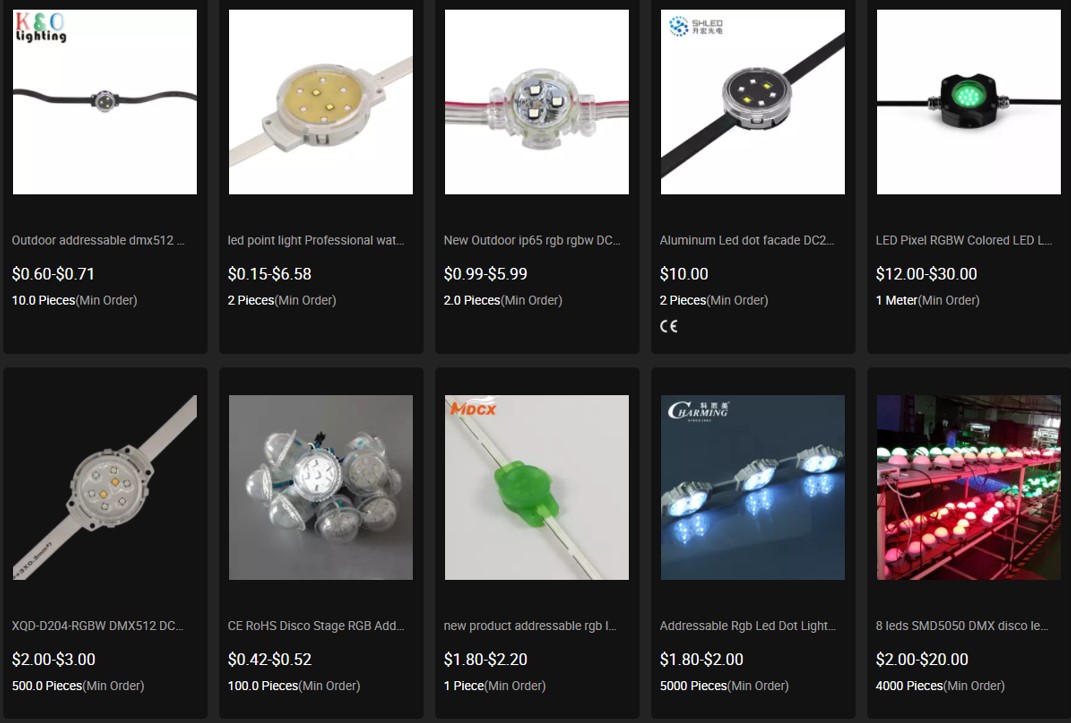
价格
价格似乎也低得惊人——你甚至会发现有些产品标价每个不到1美元!当你将其与每个可能售价在15 – 20美元之间的高端产品进行比较时,很难让人觉得有理由选择更贵的那种。不过,有几件事情你应该牢记于心。
首先,你在网站上看到的价格往往是一种吸引你兴趣并促使你与相关制造商展开洽谈的策略。在我们自己的“试验”中我们发现,虽然网站上标价是0.30美元,但一旦你开始与之交谈,很快就会得知网站上的这款产品已经“停产”或者以其他理由无法购买。所以实际报价变成了每个点6.50美元,这是一种带有6个RGB LED的24伏像素点。这看起来性价比仍然不错,对吧?嗯,当你想到每个点要6.50美元(而且是美元哦),你就会发现价格差异大幅缩小了。
“那也没关系!” 你说,“即便经历了这些,它的价格仍然只有(高端产品的)一半呢!” 好吧,让我们更科学地对比一下廉价的普通产品和ENTTEC在澳大利亚设计制造的智能像素SMART PXL series.系列产品之间的像素点表面情况。
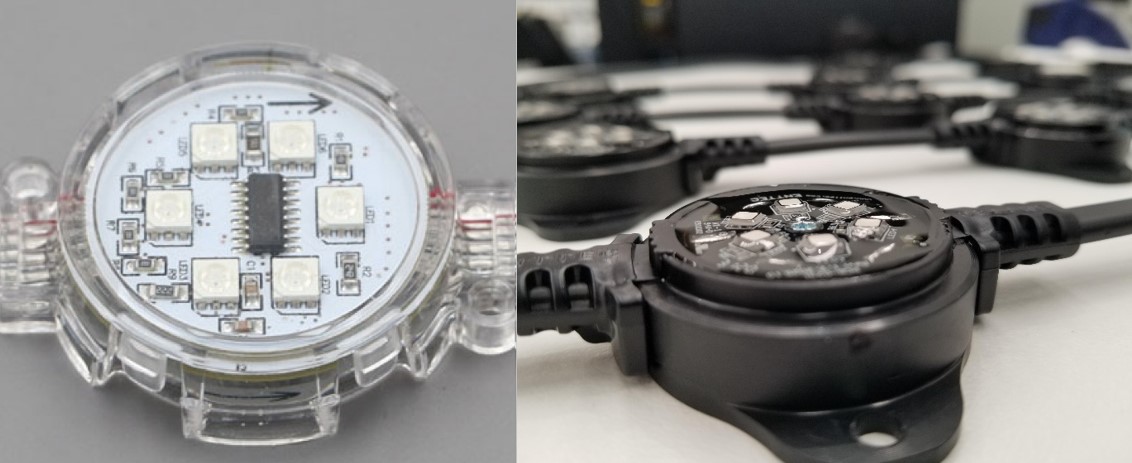
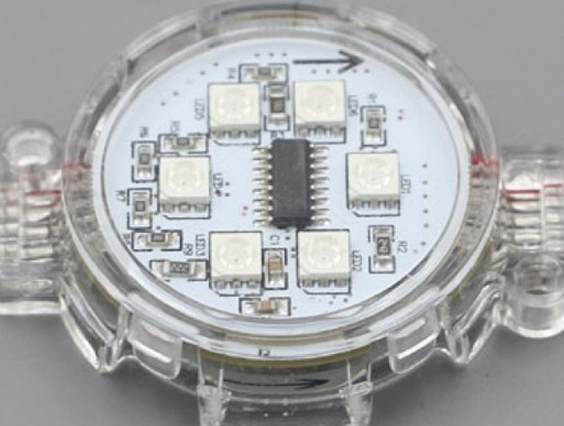
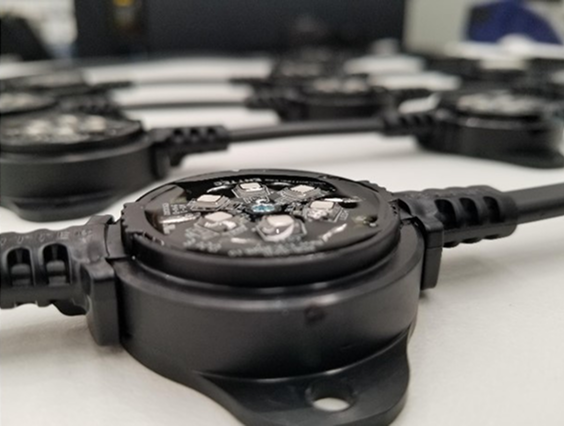
两者(廉价产品和ENTTEC的产品)都用透明的环氧树脂或聚氨酯树脂覆盖元件以确保防水。在ENTTEC,我们知道某些聚合物会随着时间推移而降解。实际上,很多树脂在阳光长时间照射下会因紫外线照射而变黄。变色的树脂当然会使你的像素点灯光输出的颜色产生偏差。然而,ENTTEC的像素点是用一种更昂贵的抗紫外线、光学透明的聚氨酯树脂制成的。这有助于产品在长时间使用过程中抵抗变黄,并且能让树脂保持一定的柔韧性,使其不会因为多年来反复的热循环而变脆开裂。
构造
让我们来看一下这些像素点是如何构造的。这可不是仅仅通过对像素点进行表面观察就能看出来的,而是要把它拆开或者拆解之后才能看到的情况。首先,让我们来看一种较为便宜的选择:
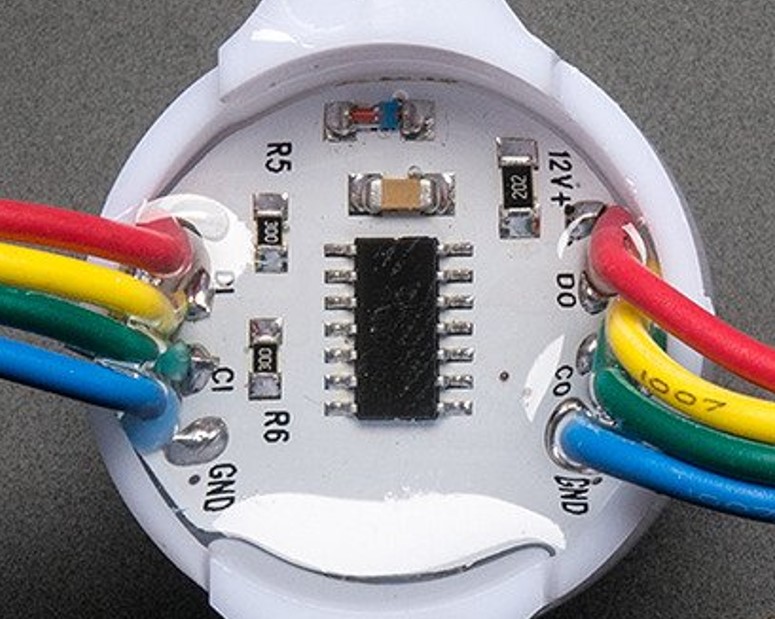
在这里我们可以看到,电线只是简单地焊接在了印刷电路板(PCB)的焊盘上,然后整个组件就被封装起来了。如果你经常做焊接工作,那你就会知道,即便是质量不错的线缆与焊盘之间的焊点,其牢固程度相对来说仍然是比较弱的。拉力可能不会立刻使焊点断开,但却能很轻易地把焊盘从电路板上完全扯下来。虽然树脂在一定程度上起到了稳固作用,但这仍然是一个比较脆弱的连接点,在经历温度变化和负载循环后,随着时间推移,它更容易出现松动的情况。
现在让我们来看一下ENTTEC的像素点有何不同。电源连接——VCC(电源电压)和接地端并非只是简单地焊接到焊盘上。相反,粗铜缆线是被压接到莫仕(Molex)压接连接器上的。这种连接器有插脚,会穿过印刷电路板(PCB)上相应的孔洞。这样一来,甚至在进行焊接之前就形成了一个稳固的机械连接。

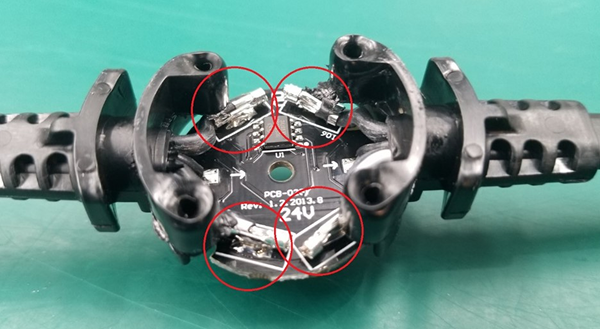
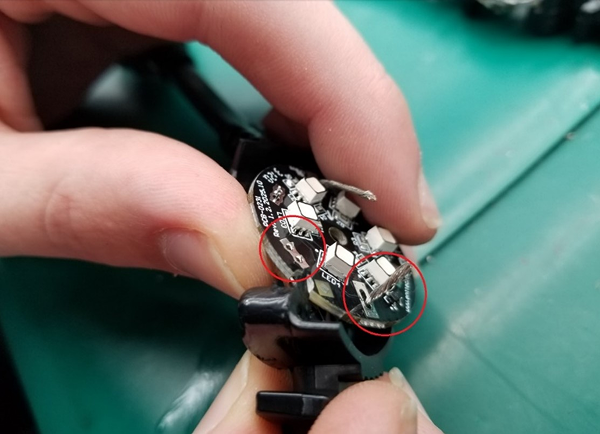
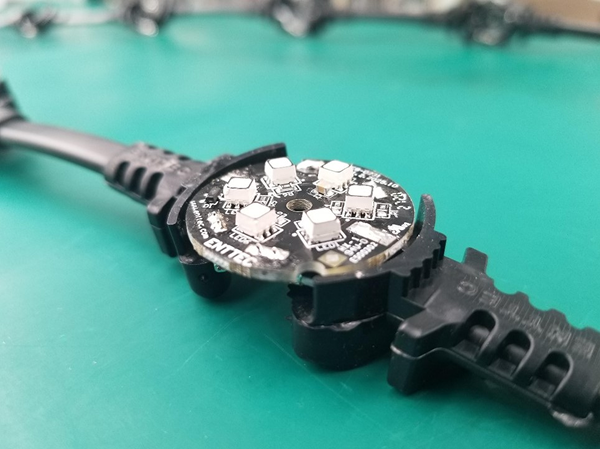
然后,所有这些部件会被组装进一个坚固的外壳中(根据具体型号的不同,外壳由加工过的铝制成,或者是采用抗紫外线的注塑聚氯乙烯制成),聚合物外模会紧密地嵌入凹槽内。最后,整个组件会被灌注在抗紫外线、光学透明的聚氨酯树脂中。无论是在安装过程中的操作导致的,还是因风吹产生的周期性拉力对线缆造成的应变,都由外模来承受,从而将这种应变分散到整个坚固的外壳上。聚氨酯树脂也有助于吸收一部分应变。最后,电气连接与印刷电路板形成了牢固的物理连接。所有这些都确保你得到的产品能够经受住恶劣的条件,并且在多年的持续使用过程中都能稳定运行。
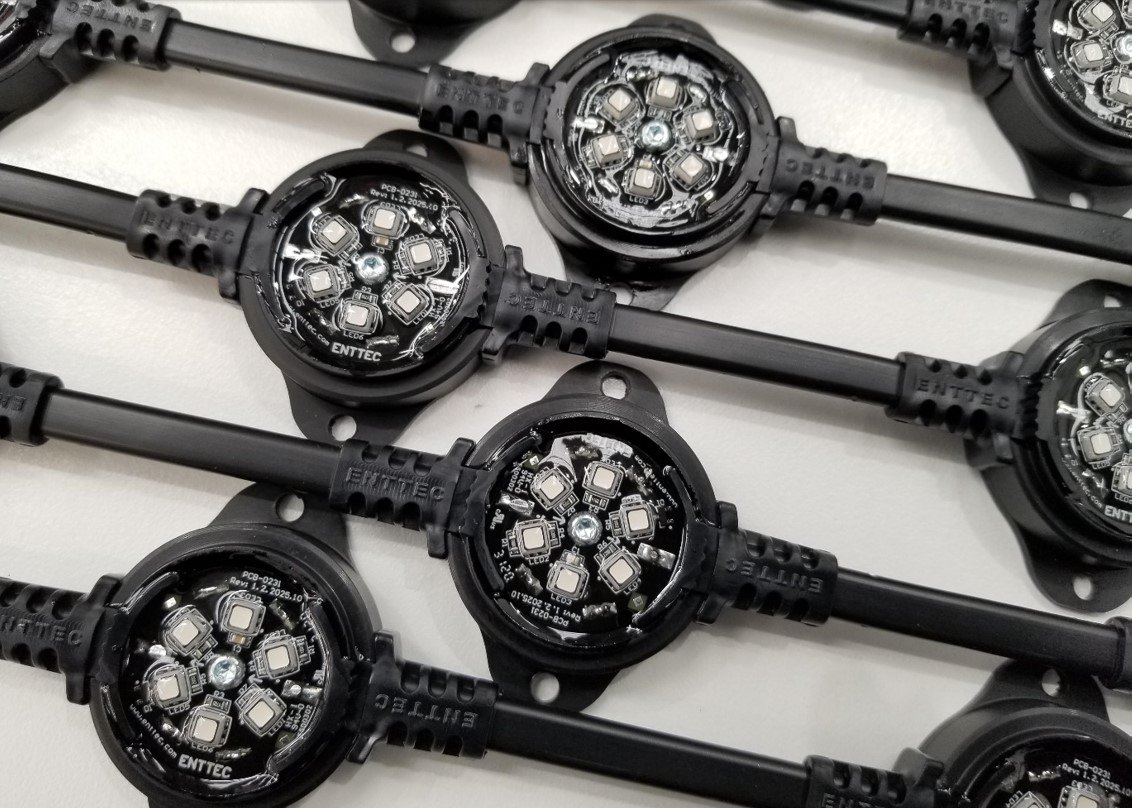
总结
仅仅为了一个像素点就做这么多工程设计——那么为什么这是必要的呢?
嗯,从长远来看,选择优质产品更明智,因为这意味着维护工作更少。没错,你可以用同样的价钱买到两套更便宜的像素点,但你还得把与维护/更换相关的成本考虑进去。首先,你得部分或完全关闭相关区域。如果那是一个热门的户外公共场所,这可能会很困难。然后,你得把更换灯带所需的人力和时间成本考虑进去,更不用说像高空作业车之类的特殊设备了,要是要去到一些难到达的地方就需要用到它们。当然,还会有不便之处以及生产效率的损失——如果你一直被困在维护工作上,那你就少了一个去承接新工作的机会。
像素照明越来越受欢迎,随之而来的是,我们看到使用不同类型设备的选项也越来越多。有时候要发现有实质意义的差异可能有点困难,但我们希望这篇概述能给你一些留意要点方面的提示。